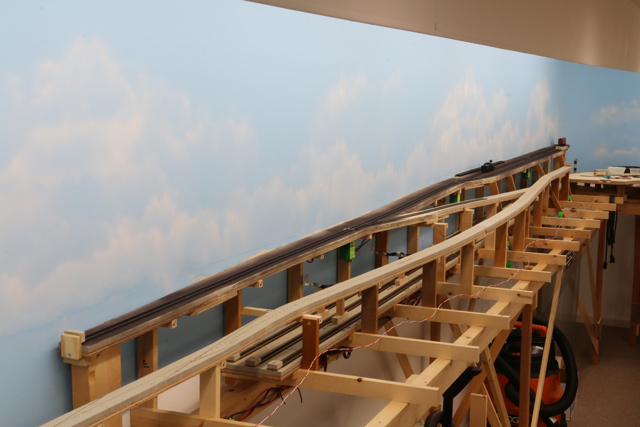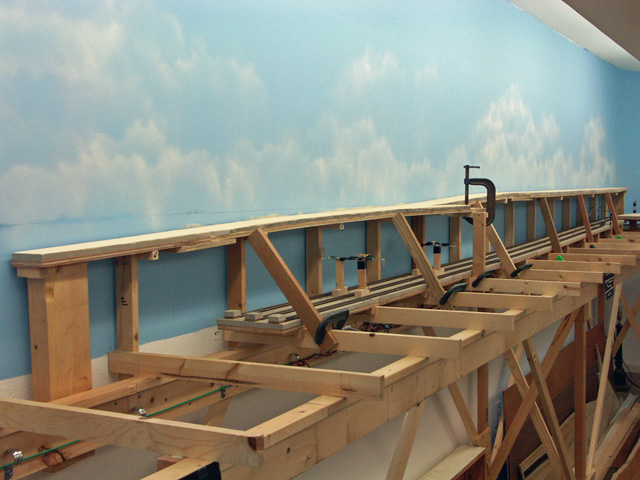As I mentioned in the previous post, I have managed to get some work done on the layout. I’m a couple weeks behind where I’d like to be, but all-in-all, things are still moving along nicely.
The Spencer logging operation received a bit of track, extending from the high line (along the wall), down to the mainline that will head back to the mill. Last weekend I cut out the next section of sub-roadbed that, when installed, will take the mainline past Whitcomb to the point where the Spencer line ducks beneath the Louisiana Central mainline (see the track plan).
And speaking of the Louisiana Central, the sub-roadbed has been extended from Maynard westward to within about three feet of Whitcomb. The next section of sub-roadbed, which will carry the line up to the middle of Whitcomb, has been cut out and is waiting for installation. I’ve also started laying cork roadbed from Maynard out to near the end of the new sub-roadbed.
Electrically, all of the bus wiring that was run a few weeks ago has been tied into the circuit breakers beneath Whitcomb. Now they are energized and ready for service. And the Tortoise motors serving the Spencer trackage have their wiring extended down to the control panel location at the (future) fascia.
Finally, Wayne and I made a lumber run and then ripped enough joists, risers and fascia supports to carry us through Whitcomb and Oneida (the next town down the line). We also cut several sections of Masonite fascia, and even managed to cut some long wooden tapers to use where track needs to drop from the cork roadbed down to the tabletop.
I’d like to complete just a bit more work before posting any progress photos, but I think that will be soon. I’m optimistic about September and look forward to some solid progress during this month.
-Jack


